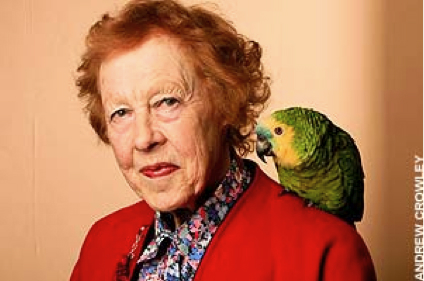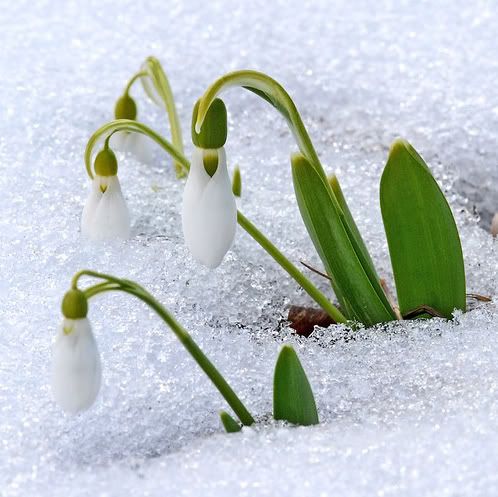
Her Majesty Queen Elizabeth II delivers her annual Christmas message to the people of the Commonwealth.
Video



 http://templars.files.wordpress.com/2007/03/wallpaper2007_07.jpg
http://templars.files.wordpress.com/2007/03/wallpaper2007_07.jpgIn one chapter, the reader travels on a mystical journey in search of the temple, ark and holy grail; in another, we are guided through a museum of holy crowns, sacred oil, swords and lances and other totems of antiquity. We begin to recover our lost senses...the question of why we dream of exploring mysterious islands or finding lost treasures; of why we value such hidden relics and attach almost divine significance to mystical regalia; is a curious one. Extrinsically, the Magna Carta of King John, and the Coronation Stone, are almost worthless objects; one is a discoloured old parchment, the other is made of mere sandstone; their value lies in sentiment alone. Destroy sentiment, however, and all that the human race holds dear vanishes with it; one might as well be a cow. One might as well be - dare we repeat it - a completely de-spiritualised republican.
 http://www.rspb.org.uk/
http://www.rspb.org.uk/ We love the smell of simmering mulled cider - a traditional British and American drink - during the Christmas holidays, and offer guests hot mulled cider throughout the cold winter months.
We love the smell of simmering mulled cider - a traditional British and American drink - during the Christmas holidays, and offer guests hot mulled cider throughout the cold winter months.



 Man Myth and Magic cover image from "The Vampires Are Coming", a painting by Austin Osman Spare
Man Myth and Magic cover image from "The Vampires Are Coming", a painting by Austin Osman Spare

"Some maintain that Churchill, a natural psychic in his own right, who had beenPDF
ordained as a Druid during a special ceremony at his ancestral home of Blenheim Palace
at the turn of the century and no stranger to Spiritualism, was actually defending a religious freedom."

"...it was on the eve of war as he sat at home at Chartwell awaiting the nation's call to arms that he was to return to this childhood passion with an unexpected fervour.
In the end, Churchill had to put his grand plans to reintroduce some of the lost British species of butterfly to his Kent estate on hold until after 1945. But it was a mission he was to resume as soon as the conflict ended. Now more than half a century later his breeding efforts are being recreated by the National Trust in the grounds of the red-brick Victorian country house where he lived until his death in 1965. The old summerhouse which he converted into a butterfly sanctuary has been revived with breeding cages.
Visitors will be able to experience the butterfly garden with its insect-friendly lavender borders – thought to be the oldest of their kind in existence – as well as the vast buddleia jungles just as they were in the 1940s and 1950s when the Churchills used to throw magnificent garden parties in which they would buy in hundreds of butterfly specimens from the renowned dealer L Hugh Newman."







 I wandered lonely as a cloud
I wandered lonely as a cloud

"The blackbirds and thrushes that had been singing freely previously suddenly ceased singing about December 15, and remained silent for a month, and as suddenly began singing again about January 15. Where they all came from I cannot think, there seemed such an increase in their numbers; one wet morning in a small meadow there were forty-five feeding in sight that could be easily counted. They say the thrushes dig up and eat the roots of the arum, yet they are not root-eaters. Possibly it may have a medicinal effect; the whole plant has very strong properties, and is still much gathered, I suppose for the herbalists. The root is set rather deep, quite a dig with a pocket knife sometimes; one would fancy it was only those which had become accidentally exposed that are eaten by the thrushes. I have never seen them do it, and some further testimony would be acceptable. The old naturalists said the bear on awakening from its winter sleep dug up and ate the roots of the arum in order to open the tube of the intestine which had flattened together during hibernation. The blackbirds are the thrushes' masters, and drive them from any morsel they fancy. There is very little humanity among them: one poor thrush had lost the joint of its leg, and in order to pick up anything had to support itself with one wing like a crutch. This bird was hunted from every spot he chose to alight on; no sooner did he enter the garden than one of the stronger birds flew at him—'so misery is trodden on by many.' There was a drone-fly on a sunny wall on January 20, the commonest of flies in summer, quite a wonder then; the same day a house-sparrow was trying to sing, for they have a song as well as a chirp; on January 22 a tit was sharpening his saw and the gnats were jumping up and down in crowds—this up-and-down motion seems peculiar to them and may-flies. Then the snowdrops flowered and a hive-bee came to them; next the yellow crocus; bees came to these, too, and so eager were they that one bee would visit the same flower five or six times before finally going away. Bees are very eager for water in the early year; you may see them in crowds on the wet mud in ditches; there was a wild bee drowning in a basin of water the other day till I took him out.
Before the end of January the woodbine leaf was out, always the first to come, and never learning that it is too soon; whether the woodbine came over with 'Richard Conqueror' or the Romans, it still imagines itself ten degrees further south, so that some time seems necessary to teach a plant the alphabet. Immediately afterwards down came a north wind and put nature under its thumb for two months; the drone-fly hid himself, the bees went home, everything became shrivelled, dry, inhuman. The local direction of the wind might vary, but it was still the same polar draught, the blood-sucker; for, like a vampire, it sucks the very blood and moisture out of delicate human life, just as it dries up the sap in the branch. While this lasted there were no notes to make, the changes were slower than the hour hand of a clock; still it was interesting to see the tree-climber come every morning at eleven o'clock to the cobble-stone wall and ascend it exactly as he ascends trees, peering into chinks among the moss and the pennywort. He seemed almost as fond of these walls as of his tree trunks. He came regularly at eleven and again at three in the afternoon, and a barn owl went by with a screech every evening a little after eight. The starlings told the time of the year as accurately as the best chronometer at Whitehall. When I saw the last chimney swallow, November 30, they went by to their sleeping-trees about three o'clock in the afternoon—a long night, a short day for them. So they continued till in January the day had grown thirty minutes longer, when they went to roost so much the later; in February, four o'clock; in March, by degrees their time for passing by the window en route drew on to five o'clock. Let the cold be never so great or the sky so clouded, the mysterious influence of the light, as the sun slowly rises higher on the meridian, sinks into the earth like a magic rain. It enters the hardest bark and the rolled-up bud, so firm that its point will prick the finger like a thorn; it stirs beneath the surface of the ground. A magnetism that is not heat, and for which there is no exact name, works out of sight in answer to the sun. Seen or unseen, clouded or not, every day the sun lifts itself an inch higher, and let the north wind shrivel as it may, this invisible potency compels the bud to swell and the flower to be ready in its calyx. Progress goes on in spite of every discouragement. The birch trees reddened all along their slender boughs, and when the sunlight struck aslant, the shining bark shone like gossamer threads wet with dew."
'Over the last few years, in trendy parts of London, at music festivals, and among clothes-horse celebrities, Barbours have become so ubiquitous that there is even a half-mocking nickname for the look, referencing the London borough where it is commonest: "Hackney farmer". The boom is even affecting sensible old John Lewis: this year, national sales of Barbours there are up more than 80%.
And the Barbour craze is only part of a much broader new appetite for products with posh associations. Brogues and Oxfords, the more clumpy and traditional-looking the better, have become the shoes of choice for many cool young men. Hunter wellies, once something for squelchy point-to-points, are now what Kate Moss and her fashion disciples wear to Glastonbury, and are currently on sale at Jigsaw. Tweed has become hip. So have faintly caddish moustaches and even – according to the high-street chain Vision Express – monocles. "There was recently a trend for waistcoats, a very young man's trend," says the fashion journalist Charlie Porter. "There is a thing for bow ties right now. There's no way a bow tie can be anything but posh." The Official Sloane Ranger Handbook – published more than a quarter of a century ago, the last time there was a vogue for upper-class style – lists the key items in the male Sloane wardrobe: "the thick, woolly Action Man sweater . . . the blazer . . . trousers worn a bit short . . . the cardigan." Over the last few years, British men's fashion magazines have featured little else.'
'...what’s happening with Barbour gives me a little fillip of excitement. What is happening, by the way, is that for the past three or four years, its wildly practical but, not exactly sexy, blingy or, let’s be honest, aesthetically lovely, waxed coats — the kind you can imagine William Hague, or for that matter General Haig, and sundry little William-and-Katettes scampering across grouse moors in — have become increasingly fashionable. And they’ve become fashionable not so much because of anything Barbour itself has done to relaunch, rebrand or restructure, but despite it.
I say this lovingly. Barbour is not a foolish, crass brand. It didn’t wake up one morning, spot someone from Dalston wearing one of its jackets and think, ooh yes, let’s hire an Italian designer to sex this up with some mink collars and lilac beading. Instead it has been quietly getting on with streamlining its silhouettes and ramping up its technical credentials so that you now find slinky Barbour jackets that weigh even less than Cheryl Cole and come in colours you might actually want to wear, ie black.'
'(Fraser's) new book, which she will be reading on BBC Radio 4 from January 11, is neither autobiography nor biography but a love story, romantic, poignant and very funny, illuminating her husband’s character and creativity. It will show the Pinters on holiday (on Paxos with Simon Gray and Ronald Harwood and their wives, performing each other’s plays) and the Pinters sharing their works in progress'